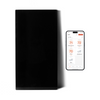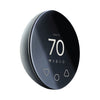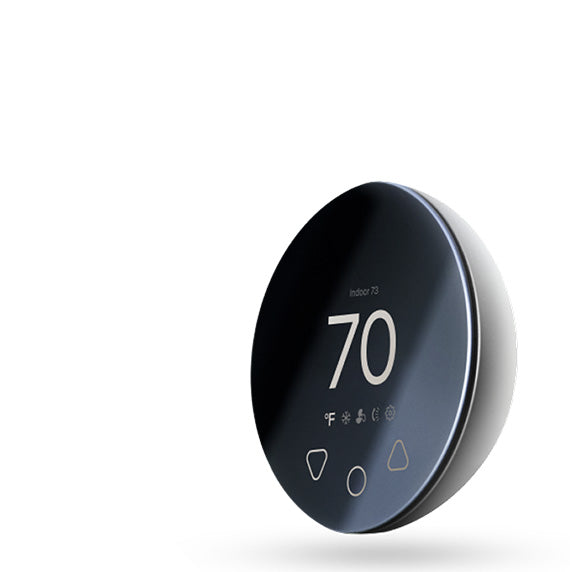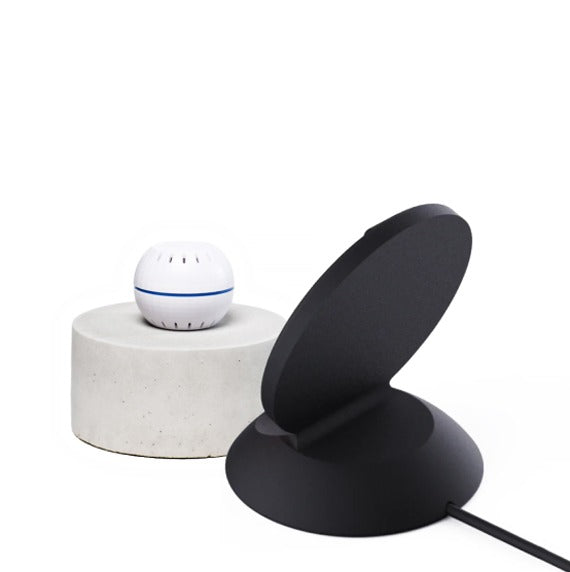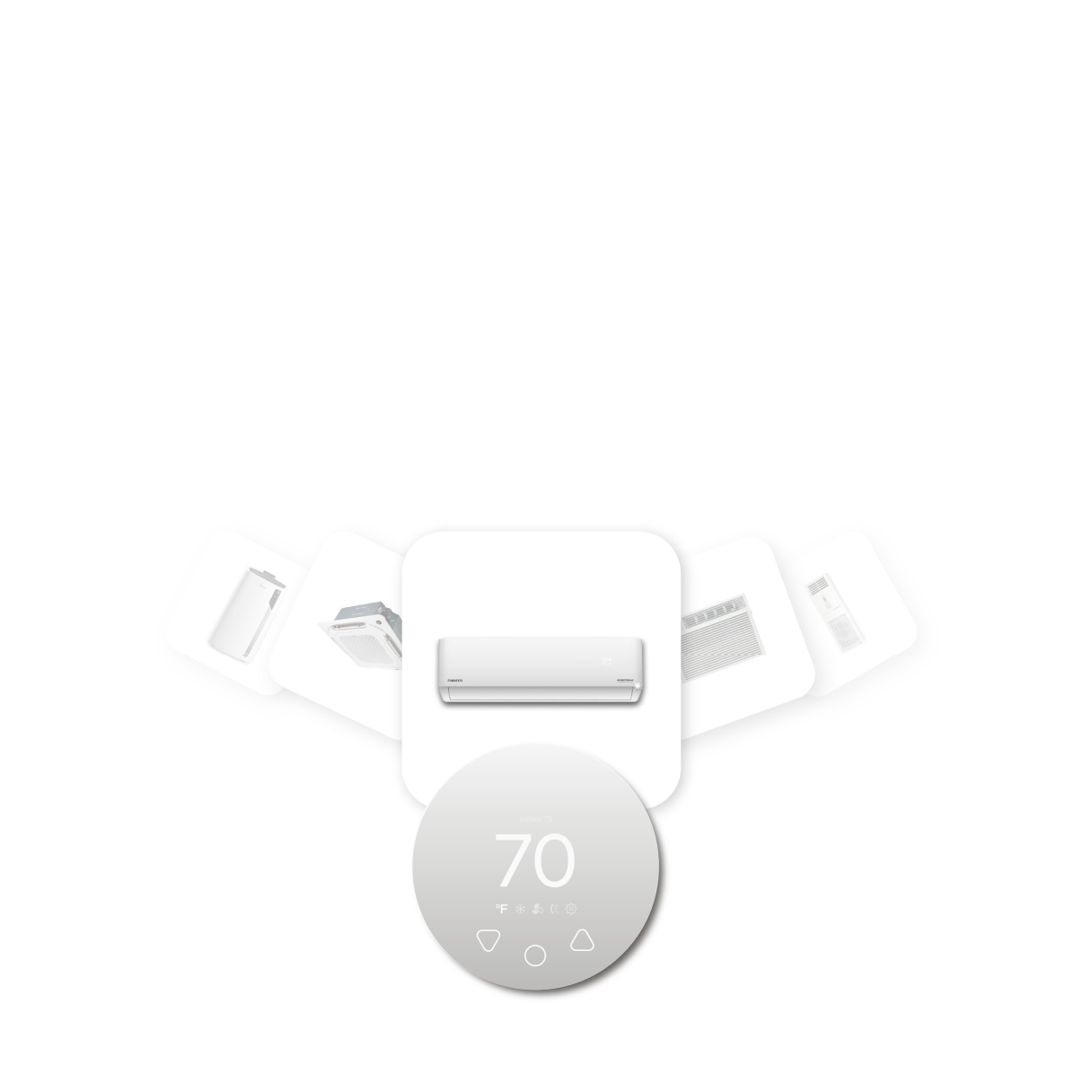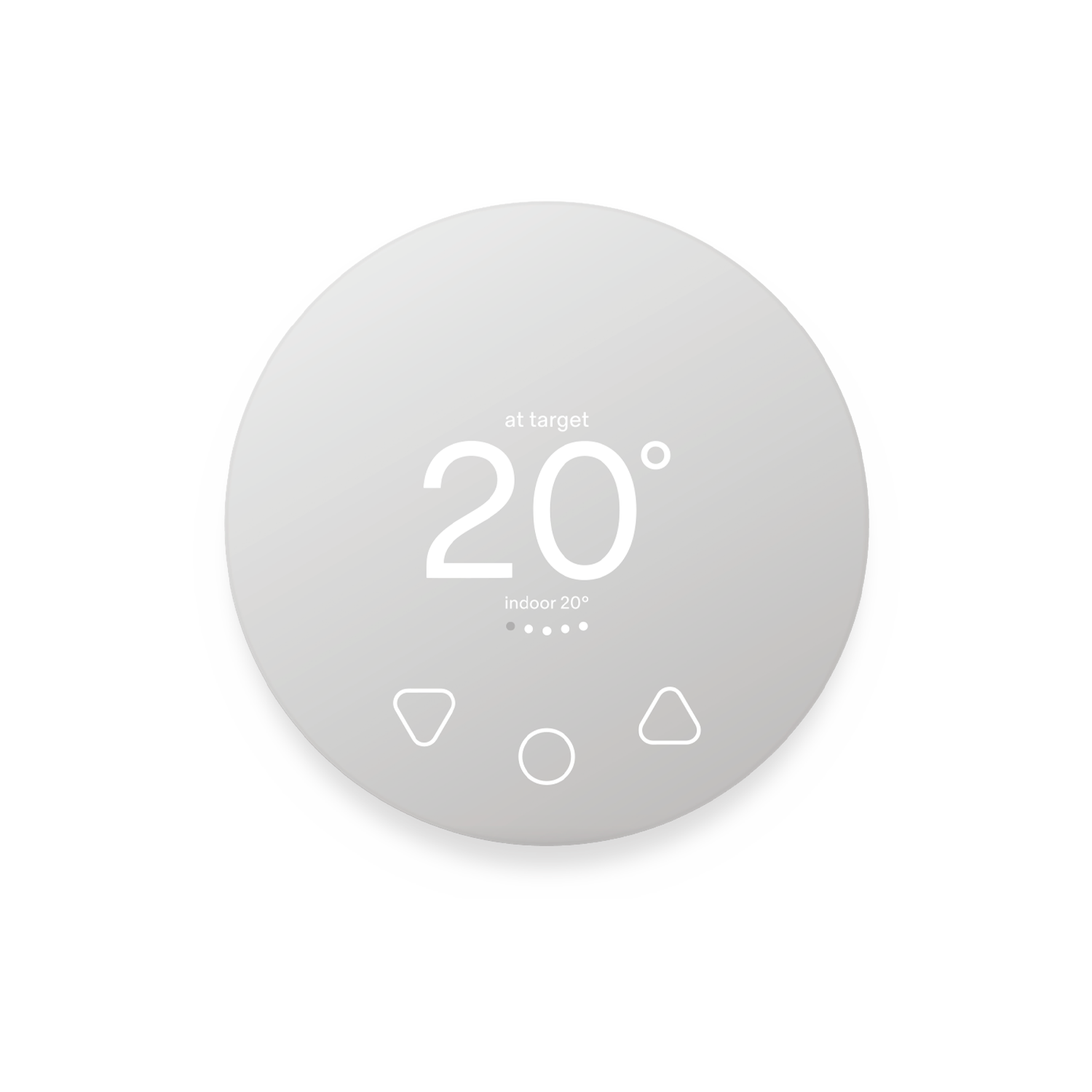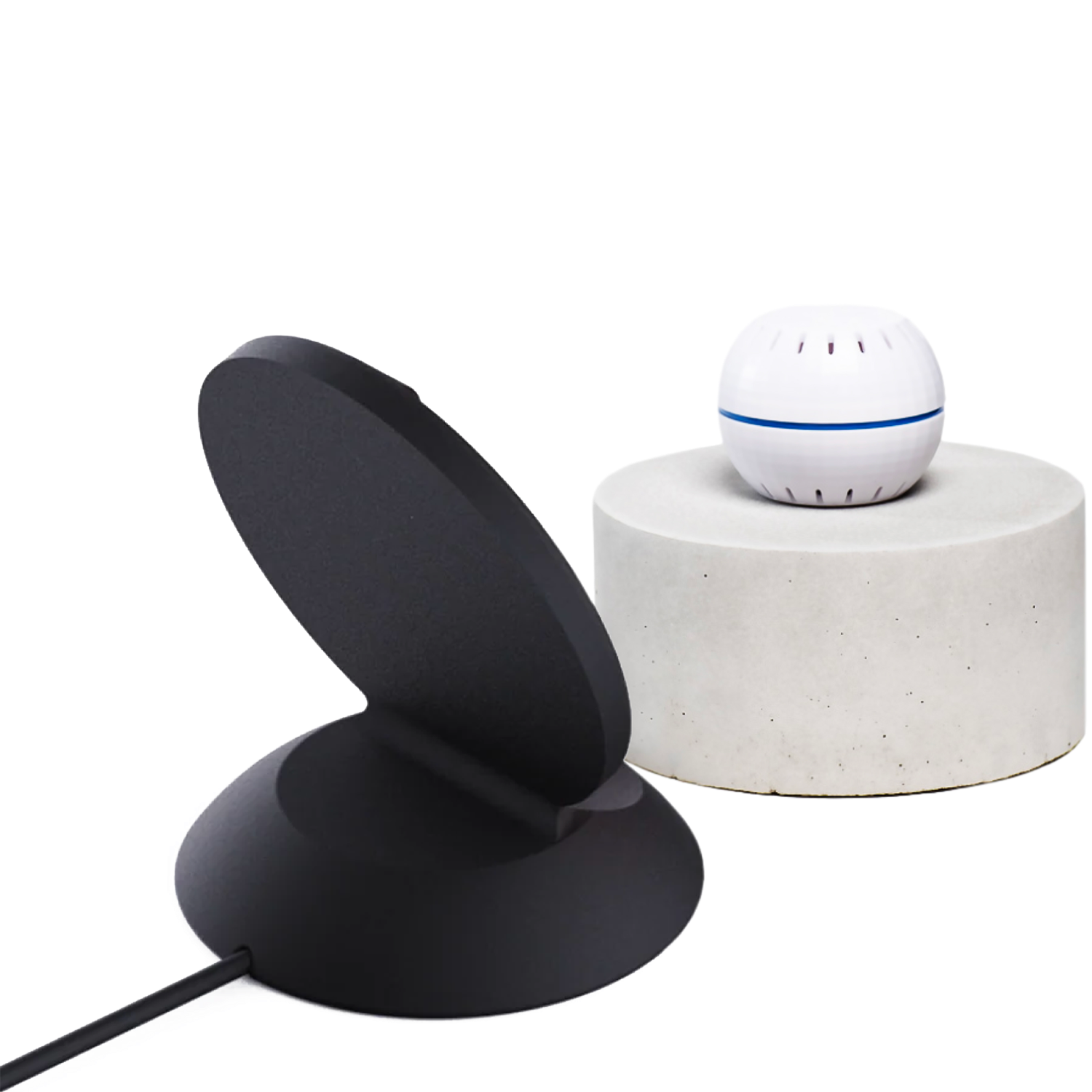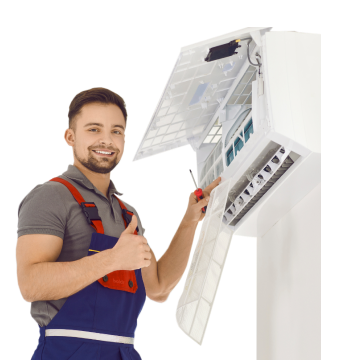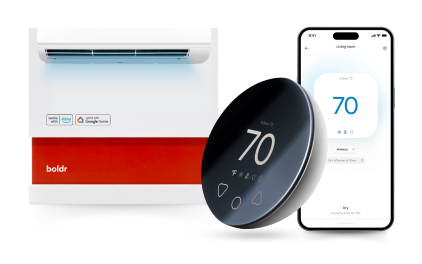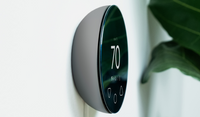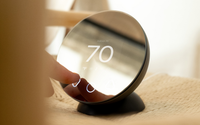
Managing the indoor climate efficiently is a priority for most homeowners, and thermostats can also play a crucial role in this.
The evolution of thermostats from basic mechanical devices to sophisticated smart systems has transformed how we control our heating and air conditioning appliances (HVAC).
When choosing between smart thermostats and traditional thermostats for your mini-split for heating and A/C, it’s essential to understand their differences and decide which fits your needs best.
Introduction to Thermostats
Thermostats regulate home heating and cooling systems, impacting both energy usage and comfort.
Over the years, they have evolved from simple manual devices to modern digital models offering smart features. Now, smart thermostats are setting the bar even higher, with advanced features such as automation and remote access.
Understanding the distinctions between a smart and traditional thermostat and how smart thermostats and traditional thermostats differ is essential for determining the best thermostat option for your mini-split.
Traditional Thermostats: What Are They?
Traditional thermostats, also known as manual thermostats or programmable thermostats, have been household staples for decades. Initially, these devices operated without digital components, using a tiny glass tube with mercury and a metal coil that expanded or contracted based on the temperature.
The tilting of the mercury would activate the thermostat for the whole house’ heating and cooling system. Modern traditional thermostats are mostly digital, allowing for temperature setting and basic scheduling.
However, they still require manual input for temperature adjustments and lack the advanced features found in smart thermostat models.
Basic Features and Limitations of Traditional Thermostats
1. Manual Control
Adjust the desired temperature setpoint by manually controlling the thermostat.
The features are basic and allow you to increase or decrease your HVAC’s setting by interacting with the thermostat's physical device.
2. Basic Scheduling
Some models allow scheduling temperature changes, but this requires programming offered by a technician, which costs money and time.
3. Lack of Automation
Traditional thermostats don't learn from user behavior or adjust automatically based on smart features, as they don’t have smart functionality.
4. No Remote Access
To change the temperature of the existing thermostat, you must physically adjust the thermostat with its physical device.
5. Lower Energy Efficiency
Without data insights or adaptive learning, optimizing energy use is challenging.
Traditional thermostats are not specifically designed with energy conservation in mind.

What is a Smart Thermostat?
Smart thermostats go beyond basic temperature control by using Wi-Fi connectivity, learning algorithms, and remote access to optimize your HVAC system's performance.
According to Ross Trethewey, founder of TE2 Engineering, smart thermostats provide greater visibility and remote control over the temperature inside your HVAC system, helping you adjust the temperature to save money and energy, and improve comfort.
Smart thermostats use learning algorithms to adapt to your daily routines, automatically adjusting the temperature to enhance efficiency.
Key Features of Smart Thermostats
1. Wi-Fi Connectivity and Automation
Smart thermostats can be controlled via their smartphone app and allow you to control your mini-split or ductless HVAC system straight from your phone.
2. Learning Algorithms
Smart thermostats adapt to your schedule, learning when to heat or cool based on your habits.
3. Motion and Remote Sensors
Detect activity in your home and can turn your mini-split on or off, depending on whether someone is home.
4. Energy Efficiency Insights
Smart thermostats provide data on energy use and energy-saving smart features, helping homeowners reduce consumption by up to 30%.

Key Differences Between Smart and Traditional Thermostats
Automation and Learning Capabilities
1. Smart Thermostats
You can control your smart thermostat wherever you are, using its smartphone app.
It automatically adjusts your mini-split based on your habits, learning your preferences over time.
2. Traditional Thermostats
Require manual adjustments to your traditional thermostat’s physical device.
You can add a basic scheduling feature, but this would require a licensed technician to program it.

Energy Savings and Efficiency Comparison
1. Smart Thermostats
Optimize energy usage by adapting to your routine, which can significantly reduce utility and cooling costs, by up to 30%.
2. Traditional Thermostats
Offer basic energy management but don’t adapt automatically, requiring consistent manual input for energy savings.
Customization Options
1. Smart Thermostats
Offer personalized schedules and can fine-tune settings based on different times of the day or specific areas of the home.
2. Traditional Thermostats
Limited to no customization options.
Installation Process
1. Traditional Thermostats
Generally easier to install, requiring basic wiring and setup.
2. Smart Thermostats
May need professional installation, though some models, such as Klima, offer a user-friendly setup that can be completed within minutes.

Benefits of Smart Thermostats
1. Energy Savings and Lower Bills
Smart thermostats help cut down on energy costs by optimizing HVAC operation due to their energy-saving smart features.
2. Increased Comfort
The ability to fine-tune temperatures and create schedules for your mini-split ensures a comfortable indoor environment.
3. Remote Convenience
Control your HVAC system from your smartphone or use voice commands with smart home assistants like Alexa or Google Assistant.
4. Long-Term Cost Savings
Though the initial investment may be higher, the long-term energy savings offset the upfront costs through energy-saving features, which can save you up to 30%.
5. Environmental Benefits
Reducing energy consumption helps decrease carbon footprints, promoting a more sustainable lifestyle.

Why Choose Klima as a Smart Thermostat
Klima is our smart thermostat designed specifically to upgrade your mini-split A/C, window A/C, ductless A/C, or heat pump into a smart home device.
Klima - Smart Home Thermostat for Mini-splits, Air Conditioners and Heatpumps
Compatible with all brands of ACs and Mini-Splits Automate Climate Management Control remotely Reduce Energy Consumption Monitor bills in realtime
Try Now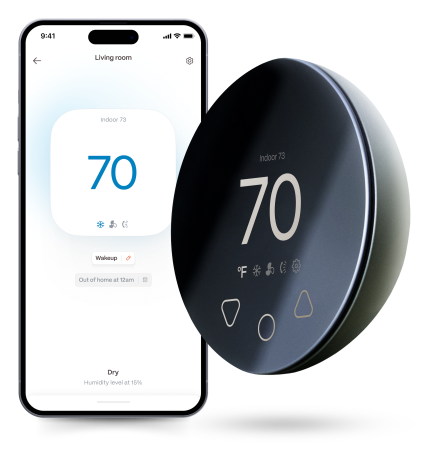
Klima allows users to control and adjust the temperature of whole HVAC systems and other heating and cooling system from your mobile or other smart devices, promoting convenience and energy efficiency.

Klima’s Benefits and Smart Features
1. Remote Access Anytime, Anywhere
Control your HVAC system from anywhere using Klima’s remote access feature.
Whether you're at work or traveling, you can ensure your home’s temperature is perfect, providing comfort and efficiency wherever you are.
2. Location-Sensing Technology
Klima’s innovative location-sensing technology adjusts your home’s climate based on your location.
It turns off your HVAC system when the last person leaves and prepares a more comfortable temperature environment for the first person's return, ensuring comfort without manual intervention.
3. Cost Monitoring and Energy Efficiency
Take control of your energy bills with Klima’s advanced cost monitoring.
Monitor real-time energy consumption, receive accurate energy bill amount predictions, and optimize your usage to save on costs of up to 30%.

4. Smart Scheduling for Seamless Daily Comfort
Align your home climate with your lifestyle using Klima’s smart scheduling.
Create customized schedules for each room, ensuring optimal comfort throughout the day without manual adjustments.
5. Smart Zoning for Personalized Comfort
Customize comfort levels on a room-by-room basis with Klima’s smart zoning feature.
This reduces energy waste and increases efficiency, tailoring the atmosphere to individual preferences.

6. Intuitive Open Window Detection
Klima includes an open window detection feature that automatically turns off your HVAC system when it senses an open window, allowing you to save energy and promoting efficient usage.
7. Mini-Split Health Monitoring
Keep an eye on your mini-split with Klima’s health monitoring feature.
It provides insights if anything goes wrong, ensuring a longer lifespan for your HVAC system, lower utility and cooling bills throughout, and allowing you to save your peace of mind.
8. Guest Access and Guardian Mode
Share Klima’s smart experience with family and guests through the Guest Access feature.
With Guardian Mode, set temperature limits to save both the environment and your money.

Extensive Compatibility with Klima
Klima is compatible with over 10,000 ductless A/C models and integrates seamlessly with other smart home devices like Apple Home, Google Home, and Amazon Alexa.
This ensures hassle-free smart home integration into your existing smart home ecosystem.
When You Should Invest Traditional Thermostat
1. Simple Needs & No Necessity for Smart Features
If you only need basic temperature control without the need for smart features, a traditional thermostat may suffice.
2. Budget-Friendly
Lower upfront cost compared to most smart thermostats however, however smart thermostats provide a greater long-term savings as compared to traditional thermostats.

Conclusion
For homeowners seeking energy efficiency, more cooling, comfort, and convenience, a smart thermostat like Klima is the better choice.
Tech-savvy users will appreciate the advanced features and customization options. However, if a thermostat with basic features is a priority, a traditional thermostat can still get the job done.
Ultimately, the thermostat decision should factor in long-term savings, the level of cooling and comfort desired, installation costs, and whether smart home integration is essential.
